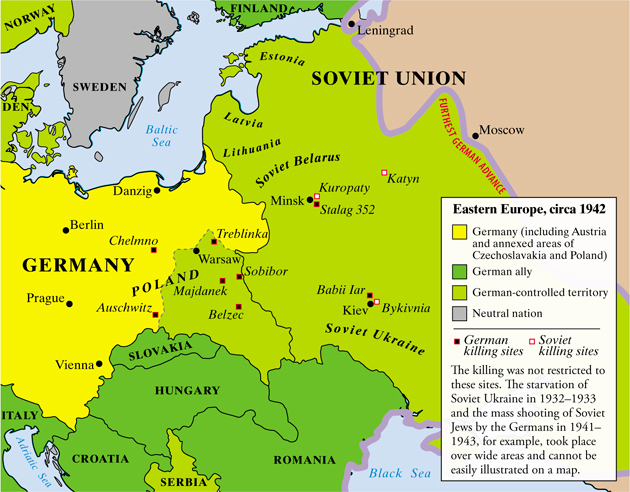Holocaust: The Ignored Reality

Though Europe thrives, its writers and politicians are preoccupied with death. The mass killings of European civilians during the 1930s and 1940s are the reference of today’s confused discussions of memory, and the touchstone of whatever common ethics Europeans may share. The bureaucracies of Nazi Germany and the Soviet Union turned individual lives into mass death, particular humans into quotas of those to be killed. The Soviets hid their mass shootings in dark woods and falsified the records of regions in which they had starved people to death; the Germans had slave laborers dig up the bodies of their Jewish victims and burn them on giant grates. Historians must, as best we can, cast light into these shadows and account for these people. This we have not done. Auschwitz, generally taken to be an adequate or even a final symbol of the evil of mass killing, is in fact only the beginning of knowledge, a hint of the true reckoning with the past still to come.
The very reasons that we know something about Auschwitz warp our understanding of the Holocaust: we know about Auschwitz because there were survivors, and there were survivors because Auschwitz was a labor camp as well as a death factory. These survivors were largely West European Jews, because Auschwitz is where West European Jews were usually sent. After World War II, West European Jewish survivors were free to write and publish as they liked, whereas East European Jewish survivors, if caught behind the iron curtain, could not. In the West, memoirs of the Holocaust could (although very slowly) enter into historical writing and public consciousness.
This form of survivors’ history, of which the works of Primo Levi are the most famous example, only inadequately captures the reality of the mass killing. The Diary of Anne Frank concerns assimilated European Jewish communities, the Dutch and German, whose tragedy, though horrible, was a very small part of the Holocaust. By 1943 and 1944, when most of the killing of West European Jews took place, the Holocaust was in considerable measure complete. Two thirds of the Jews who would be killed during the war were already dead by the end of 1942. The main victims, the Polish and Soviet Jews, had been killed by bullets fired over death pits or by carbon monoxide from internal combustion engines pumped into gas chambers at Treblinka, Bełzec, and Sobibór in occupied Poland.
Auschwitz as symbol of the Holocaust excludes those who were at the center of the historical event. The largest group of Holocaust victims—religiously Orthodox and Yiddish-speaking Jews of Poland, or, in the slightly contemptuous German term, Ostjuden —were culturally alien from West Europeans, including West European Jews. To some degree, they continue to be marginalized from the memory of the Holocaust. The death facility Auschwitz-Birkenau was constructed on territories that are today in Poland, although at the time…
This is exclusive content for subscribers only.
Get unlimited access to The New York Review for just $1 an issue!
Continue reading this article, and thousands more from our archive, for the low introductory rate of just $1 an issue. Choose a Print, Digital, or All Access subscription.
If you are already a subscriber, please be sure you are logged in to your nybooks.com account.
